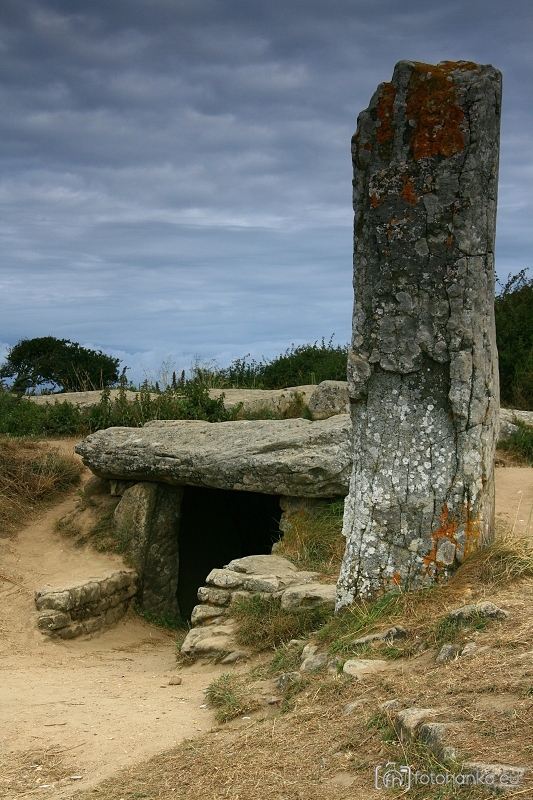
These long chambers also are referred to as 'Long tombs' and 'passage-graves. The stone statue of 10 m in height and 86 tons in weight is called 'the mystery of Easter Island'. Some dolmens also contain long, stone chambers or halls which connect different rooms. About 200 stone statues of human faces are erected facing towards the sea along the coast 3,200km away from South America. Dolmens, Menhirs and Megaliths in the Languedoc-Roussillon. This stone statue was discovered in many countries, but the stone statue in Easter Island of the South Pacific is representative. These upright slabs are called menhirs (men stone, hir long) (Brown 1977: 6). In large structures, such as the Maltese temples and Stonehenge, the supporting stones are also worked and are as massive as the dolmen. It refers to Buksu (Jangseung Korean traditional totem pole) or stone haroobang and gate and stone figure erected in front of the tomb. The dolmen is always supported on other large stones. It is considered to be related to funeral or observing sunrise.Ī stone statue is erected by inscribing a human face on the stone.

In der prähistorischen Archäologie bezeichnet das Wort einen länglichen Einzelstein (bretonisch maen Stein und hir lang), der in vorgeschichtlicher Zeit von Menschen aufrecht gestellt wurde. The main monuments were menhirs, dolmens and cromlechs. Menhir ist eine aus dem Bretonischen entlehnte Bezeichnung für einen vorgeschichtlichen, hochragenden Steinblock, der auch als Hinkelstein bekannt ist. A typical stone circle is Stone Henge in Britain, which was erected with 30 stones from 210km away. The Kerloas menhir, at 9.5 meters the tallest standing menhir in Brittany. Standing stones or menhirs (because of their large size, called megaliths) are stones set vertically in the ground and in many different varieties like dolmens. The stone row was considered to be related to the ancestral rites.Ī stone circle is a monument of standing stones arranged in a circle. Stone rows in Bretagne of France were representative in Europe, not found in Korea.
#Menhir and dolmen series#
A single or several menhirs were distributed in columns like in France or Great Britain of Europe.Ī stone row (or stone alignment), is a linear arrangement of upright, parallel megalithic standing stones set at intervals along a common axis or series of axes. History and heritage buffs, those fascinated by the history.

Its origin is related to the phallicism wishing the production and abundance. Office de tourisme de Carnac Discover Carnac Menhirs and heritage Tumulus and dolmens at Carnac. In Europe, megalithic monument was built with stones since the Neolithic era and in Asia and other regions, dolmens were built in the Bronze Age or Iron Age.ĭolmens in Asia including Korea were featured by one capstone in one grave and those in Western Europe were characterized by tunnel type (passage type) with several capstones over several upright stones.Ī menhir represents the megalithic culture with dolmen and is a large upright standing stone. In Breton itself, the word peulvan is used for menhir. A dolmen, also known as a portal tomb, is a type of single-chamber megalithic tomb and is a relic representing the megalithic culture. The word menhir is a modern artificial compound using Breton words.


 0 kommentar(er)
0 kommentar(er)
